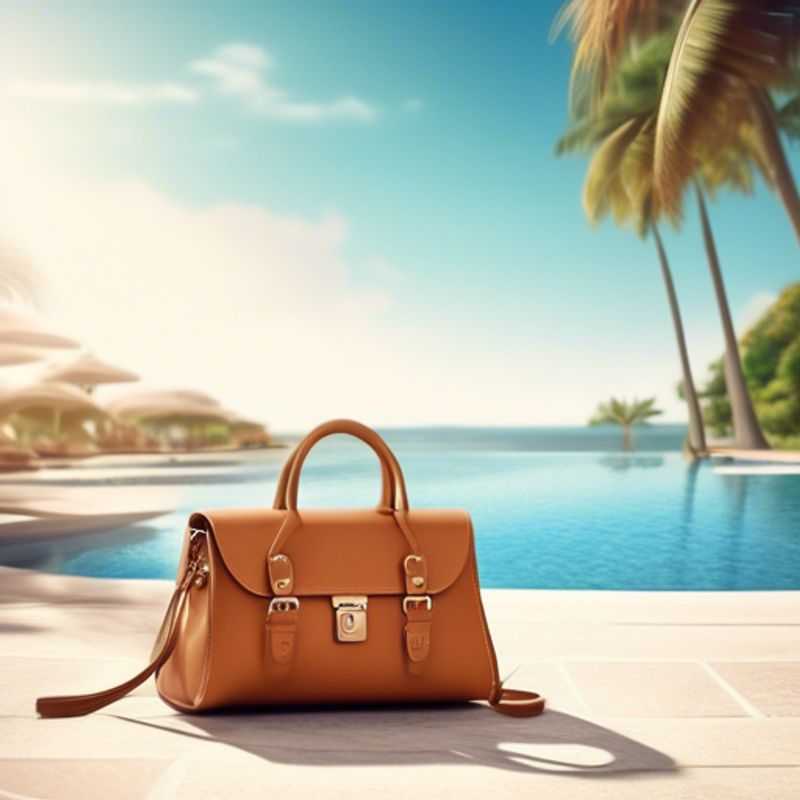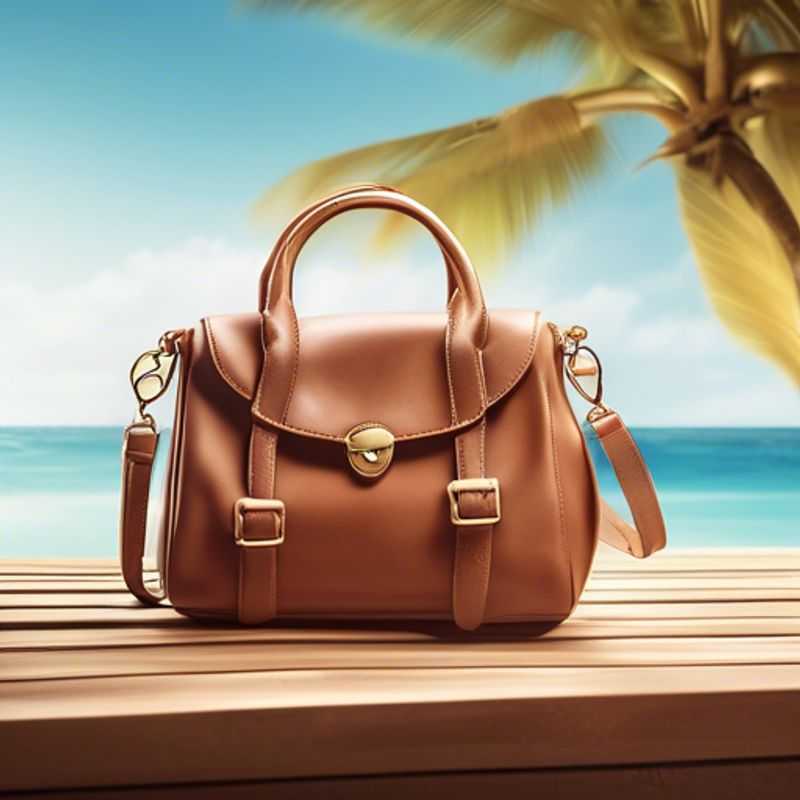5 Key Considerations When Choosing a Designer Handbag or Travel Satchel: A Guide for the Discerning Shopper

5 Tips for Choosing the Perfect Designer Handbag or Travel Satchel: A Bargain Hunter's Guide
Alright, fellow adventurers!
- Consider the intended use and functionality of the bag.

Beyond Aesthetics: Choosing a Bag Based on Its Purpose
When considering a bag, the most crucial aspect is its intended use and functionality. This means understanding what you'll use it for and how it will serve your needs.
For daily use, a versatile tote bag or backpack is ideal. They can carry everyday essentials like laptops, books, and personal items. For travel, a durable and spacious suitcase or duffel bag is preferable. If you're a frequent flyer, look for a carry-on-sized bag that fits airline regulations.
Functionality also involves factors like the bag's material, size, and features. For instance, a leather bag is more durable but heavier than a canvas bag. Consider your budget and the frequency of use when making your choice.
Remember to assess the bag's compartments, pockets, and closures to ensure they meet your specific needs. Some bags offer specialized features like padded compartments for electronics, water bottle holders, or key clips.

Beyond the Label: Evaluating Material Quality and Craftsmanship
Evaluating the quality of materials and craftsmanship is crucial when purchasing anything, from a simple shirt to a complex piece of furniture. It ensures you're investing in something durable, aesthetically pleasing, and potentially valuable in the long run. Here's a concise guide to help you navigate this process:
Materials: Start by understanding the materials used. Research the specific properties, benefits, and potential drawbacks of each material. For example, leather is known for its durability and patina development over time, while linen is valued for its breathability and natural texture.
Craftsmanship: Look for signs of meticulous construction. Examine seams, stitching, joints, and finishing. Look for even stitching, strong joins, and smooth surfaces. Avoid any unevenness, gaps, or loose threads, which can indicate poor craftsmanship.
Weight and Feel: A well-crafted item will feel substantial and balanced in your hand. The weight should be appropriate for the material and its intended use.
Details: Pay attention to the finer details. Are the buttons sturdy and well-attached? Does the hardware complement the design? Are there any imperfections or flaws in the finish?
Price: High-quality materials and craftsmanship usually come at a price. Consider the price point in relation to the overall quality of the item. Be wary of suspiciously low prices, as they may indicate the use of inferior materials or poor construction.
Research: Don't hesitate to research the brand or maker. Reputable brands often have a strong commitment to quality. Look for reviews, testimonials, or certifications related to their materials and craftsmanship.
Ask Questions: If you're unsure about any aspect of the materials or craftsmanship, don't hesitate to ask the seller or a knowledgeable expert. They can provide you with additional information and help you make an informed decision.

Unmasking the Real Deal: Researching Brand Reputation and Authenticity
Want to know if a brand is the real deal? It's more than just checking out their Instagram feed! Here's the scoop on researching brand reputation and authenticity. First, dive into online reviews. Check out websites like Trustpilot and Google Reviews to see what real customers are saying. Look for consistent patterns, both positive and negative. If you see a lot of fake or suspiciously positive reviews, it might be a red flag.
Next, investigate the brand's website. A professional-looking website with clear contact information and policies builds trust. Look for "About Us" pages, testimonials, and awards. Dig a little deeper: do their claims and promises match up with their online presence and media mentions?
Don't forget the social media. Active and engaging social media profiles can tell you a lot about a brand's personality and commitment to customer service. Pay attention to how they respond to customer feedback. A brand that avoids negativity or engages in overly promotional practices might be hiding something.
Finally, check the news and media for any controversies or negative press surrounding the brand. A quick Google search can help you find information about any past scandals, lawsuits, or ethical concerns. This is a great way to understand a brand's track record and how they handle challenges.
Remember, researching brand reputation and authenticity takes time and effort, but it's worth it! By doing your homework, you'll make informed decisions and avoid potential scams or disappointment.

Baggage Check: Sizing Up Your Perfect Travel Companion
When it comes to bags, size and shape are key. A large, rectangular bag will be perfect for carrying bulky items like laptops or books, while a small, round bag might be better for essentials like your phone and wallet. Think about what you'll need to carry on a daily basis and choose a bag that accommodates those needs.
But it's not just about the overall size. You'll also want to consider the internal organization. Does the bag have compartments? Pockets? These features can help keep your belongings organized and easy to find. If you're a frequent traveler, a bag with multiple compartments can be invaluable.
You also want to make sure the bag is comfortable to carry. Will it be on your shoulder, in your hand, or across your body? Consider the straps and handles. A well-padded strap can make a big difference in comfort, especially if you're carrying a heavy load.
Keep in mind that the best way to truly assess a bag is to try it on. This will help you see if it fits well, if it's comfortable, and if it meets your organizational needs. Don't be afraid to ask for help from a salesperson if you need it.

Budgeting Like a Boss: Sales & Discounts Are Your Secret Weapons
Determining your budget is the cornerstone of any successful shopping endeavor. Before you dive into the alluring world of sales and discounts, take a moment to assess your financial landscape. Ask yourself: How much can I realistically afford to spend?
Once you've established your budget, it's time to unleash your inner bargain hunter! Look for sales or discounts, whether they're online or in-store. Websites often offer deals and coupons, while retailers may have special promotions or clearance sections.
Remember, patience is a virtue when it comes to finding the best deals. Don't rush into buying something just because it's on sale. Compare prices, research products, and ensure you're getting a good value for your money.
Happy shopping! Remember to always be mindful of your budget and take advantage of sales and discounts whenever possible. You might just be surprised at how much you can save.
